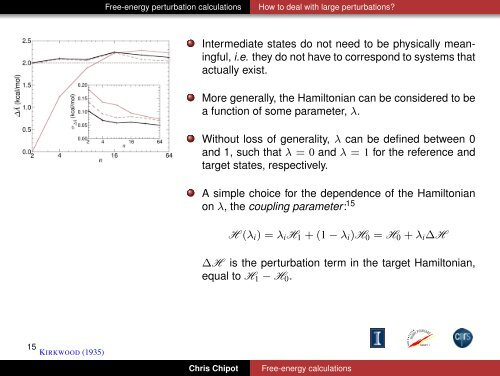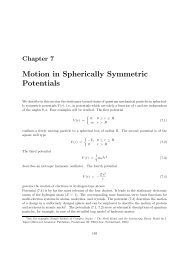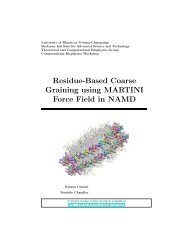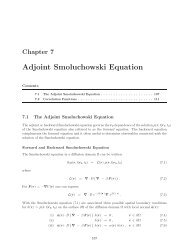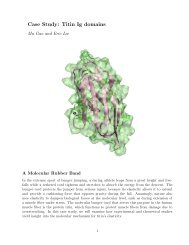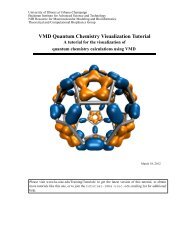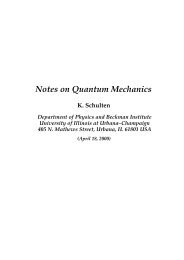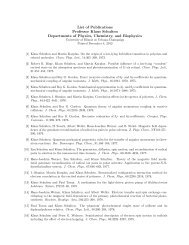Free-energy calculations - Theoretical Biophysics Group
Free-energy calculations - Theoretical Biophysics Group
Free-energy calculations - Theoretical Biophysics Group
You also want an ePaper? Increase the reach of your titles
YUMPU automatically turns print PDFs into web optimized ePapers that Google loves.
15 KIRKWOOD (1935)<br />
<strong>Free</strong>-<strong>energy</strong> perturbation <strong>calculations</strong> How to deal with large perturbations?<br />
Intermediate states do not need to be physically meaningful,<br />
i.e. they do not have to correspond to systems that<br />
actually exist.<br />
More generally, the Hamiltonian can be considered to be<br />
a function of some parameter, λ.<br />
Without loss of generality, λ can be defined between 0<br />
and 1, such that λ = 0 and λ = 1 for the reference and<br />
target states, respectively.<br />
A simple choice for the dependence of the Hamiltonian<br />
on λ, the coupling parameter: 15<br />
H (λi) = λiH1 + (1 − λi)H0 = H0 + λi∆H<br />
∆H is the perturbation term in the target Hamiltonian,<br />
equal to H1 − H0.<br />
Chris Chipot <strong>Free</strong>-<strong>energy</strong> <strong>calculations</strong>


